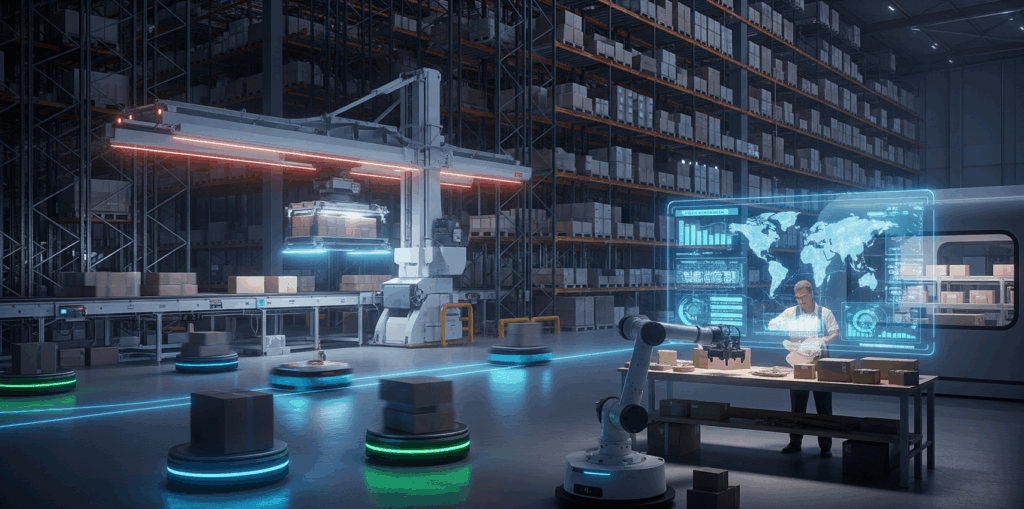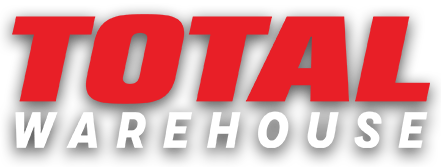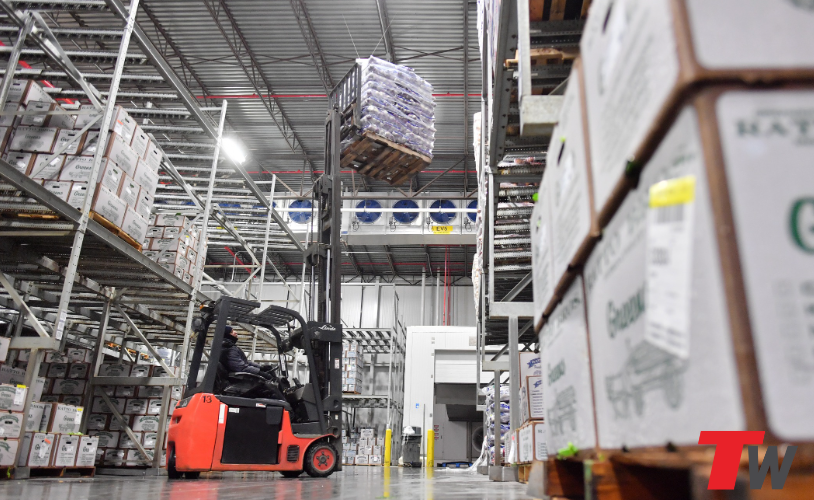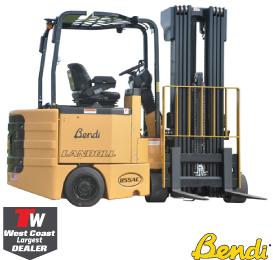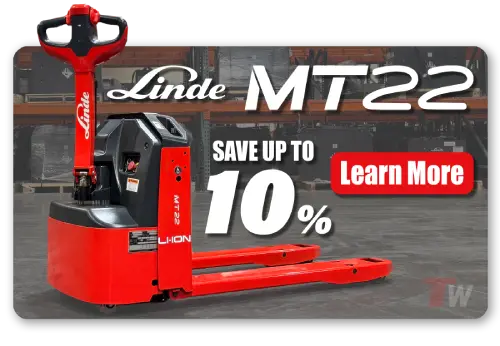Key Takeaways
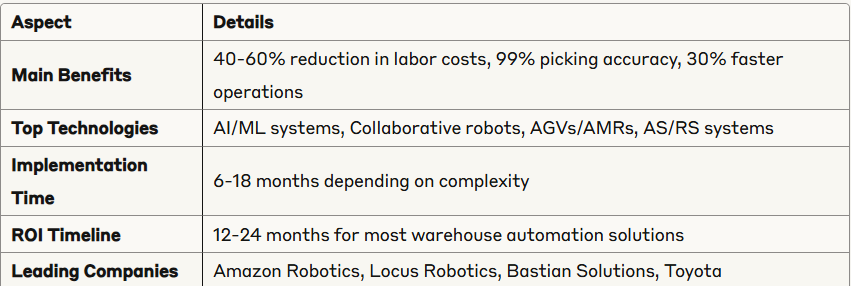
The warehouse automation industry has exploded over the past few years, and honestly, it’s about time. After spending 15 years managing distribution centers, I’ve seen firsthand how these technologies can make or break your operation. Today’s automated warehouse systems aren’t just fancy gadgets – they’re essential tools for staying competitive.
What Are Warehouse Automations and Why Do They Matter?
Let me tell you something that might surprise you: warehouse automations aren’t just about robots running around your facility (though that’s pretty cool too). These systems represent a fundamental shift in how we think about logistics and supply chain efficiency.
I remember when I first encountered warehouse automation companies pitching their solutions. Seemed too good to be true, right? But after implementing our first automated warehouse picking system, we saw a 35% increase in productivity within three months.
Digital vs. Physical Warehouse Automation Solutions
There are two main types of warehouse automations:
- Digital automation – Software-based systems that streamline processes
- Physical automation – Robotic equipment that handles materials
The beauty is how these work together. Your warehouse management system (digital) talks to your AGVs (physical) to create a seamless operation.
FAQ: What’s the difference between WMS and warehouse automations? A WMS is software that manages your operations, while warehouse automations include both software AND physical equipment working together.
FAQ: Can small warehouses benefit from automation? Absolutely! Many warehouse automation solutions are scalable and can start small. I’ve seen 10,000 sq ft facilities get amazing results.
The Business Case: Why Warehouse Automation Companies Are Booming
The numbers don’t lie, and they’re pretty staggering. According to recent industry data, the average warehouse spends over $3.7 million annually just on labor costs. That’s not counting benefits, training, or turnover expenses.
Here’s what I’ve observed after working with multiple warehouse automation companies:
- Labor shortage crisis – We’re facing an unprecedented worker shortage
- E-commerce pressure – Same-day delivery expectations are crushing traditional operations
- Cost inflation – Labor costs keep rising while profit margins shrink
- Accuracy demands – Customers expect 99.9% order accuracy

I’ll never forget the first time I walked into an Amazon fulfillment center. The coordination between humans and machines was like watching a perfectly choreographed dance. That’s when I realized warehouse automations weren’t coming – they were already here.
15 Warehouse Automation Technologies Reshaping 2025
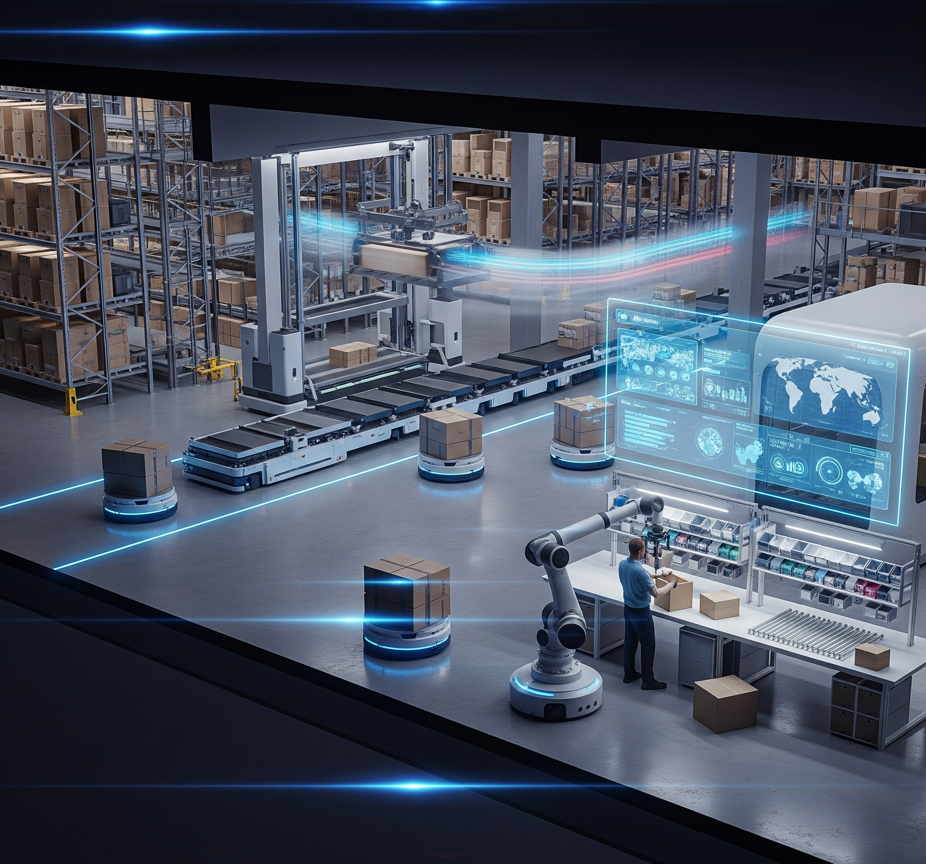
1. Warehouse Management Systems (WMS) – The Brain of Operations
Your WMS is like the conductor of an orchestra, except instead of violins, it’s coordinating forklifts, conveyors, and picking robots. These systems have come so far from the basic inventory trackers I used 20 years ago.
Modern WMS platforms integrate with:
- Real-time inventory tracking
- Automated picking route optimization
- Labor management and scheduling
- Integration with warehouse automated storage retrieval systems
Personal experience: We once had a WMS crash during Black Friday week. Talk about a nightmare! That’s when I learned the importance of redundancy and cloud-based backup systems.
Leading WMS providers include:
- SAP Extended Warehouse Management
- Oracle NetSuite WMS
- Manhattan Associates
- Blue Yonder (formerly JDA)
FAQ: How long does WMS implementation take? Typically 3-6 months, but I’ve seen complex operations take up to a year. Plan accordingly!
FAQ: What’s the ROI on a new WMS? Most facilities see 15-25% efficiency gains within the first year, which usually pays for the system.
2. Collaborative Robots (Cobots) – Your New Best Friend
Cobots are hands-down my favorite warehouse automation trend. Unlike traditional industrial robots that need safety cages, these work right alongside your team. I’ve watched 60-year-old warehouse veterans become cobot champions within weeks.
Key applications include:
- Order picking assistance
- Palletizing and depalletizing
- Quality control inspections
- Packaging operations

One thing that caught me off guard was how quickly workers adapted. I expected resistance, but instead found enthusiasm once people realized cobots made their jobs easier, not obsolete.
3. Automated Guided Vehicles (AGVs) and Autonomous Mobile Robots (AMRs)
Here’s where things get really interesting. AGVs follow predetermined paths (think of them as trains on invisible tracks), while AMRs use AI to navigate dynamically around obstacles.
I made the mistake of starting with AGVs when AMRs would have been better for our chaotic environment. AGVs work great in structured warehouses, but AMRs adapt to the real world better.
AGV advantages:
- Lower cost per unit
- Proven reliability
- Easier initial setup
- Predictable routing
AMR advantages:
- Dynamic pathfinding
- Better obstacle avoidance
- Easier to reconfigure
- More sophisticated AI
FAQ: AGVs vs AMRs – which should I choose? If your warehouse layout is stable and predictable, go with AGVs. If you need flexibility and have changing layouts, AMRs are worth the extra investment.
FAQ: How many AGVs/AMRs do I need? Start with 2-3 units per 50,000 sq ft and scale based on results. Don’t go all-in immediately!

4. Automated Storage and Retrieval Systems (AS/RS)
AS/RS systems are the ultimate space-savers. These warehouse automated storage retrieval systems can triple your storage density while improving picking speed. My biggest regret? Not installing AS/RS sooner – we wasted five years of prime real estate.
Types of AS/RS systems:
- Unit-load systems (for pallets)
- Mini-load systems (for totes/cartons)
- Vertical lift modules (VLMs)
- Carousel systems
- Shuttle systems
Benefits I’ve personally witnessed:
- 200-400% increase in storage density
- 99.9% picking accuracy
- Reduced labor costs by 60%
- Better inventory control
The learning curve can be steep. Plan for 3-6 months of intensive training and system optimization.
Leading AS/RS providers:
- Kardex (excellent VLMs)
- Bastian Solutions (comprehensive systems)
- Swisslog (European engineering)
- Dematic (proven track record)
5. Wearable Technology – Making Workers Superhuman
Wearables in warehouses have evolved far beyond simple barcode scanners. We’re talking about:
- Smart glasses with AR overlays
- Voice-directed picking headsets
- Haptic feedback gloves
- Biometric safety monitors
I was skeptical about smart glasses until I saw a picker navigate a 40-foot high rack without looking down once. The efficiency gains were immediate and obvious.
Popular wearable solutions:
- Vuzix smart glasses
- Honeywell voice systems
- ProGlove scanning gloves
- RealWear head-mounted displays

The biggest challenge? Getting workers comfortable with new technology. Start with volunteers and let success stories spread naturally.
6. Predictive Maintenance – Preventing Problems Before They Happen
Nothing kills productivity like unexpected downtime. Predictive maintenance uses sensors and AI to spot problems before they cause failures. We reduced unplanned downtime by 80% after implementing these systems.
Key technologies:
- Vibration analysis sensors
- Thermal imaging cameras
- Oil analysis systems
- Machine learning algorithms
Benefits include:
- 70-90% reduction in breakdowns
- 25-30% lower maintenance costs
- Extended equipment life
- Better safety records
FAQ: Is predictive maintenance worth it for smaller operations? Yes! Even basic vibration monitors on critical equipment can save thousands in downtime costs.
FAQ: How accurate are predictive maintenance systems? Modern systems achieve 85-95% accuracy in predicting failures 2-4 weeks in advance.
7. Fleet Management Systems – Knowing Where Everything Is
If you have more than five pieces of mobile equipment, you need fleet management. These systems track location, usage, maintenance needs, and operator behavior in real-time.
I learned this lesson the expensive way when we couldn’t find three forklifts during a peak season rush. They were “hiding” in different zones, fully charged but unused.
Fleet management features:
- GPS tracking and geofencing
- Operator authentication
- Usage analytics
- Maintenance scheduling
- Impact detection
- Battery monitoring
Top fleet management providers:
- Toyota Material Handling
- Crown Equipment
- Linde Material Handling
- Raymond Corporation
8. Pick-to-Light and Put-to-Light Systems
These systems use LED displays to guide workers to the right locations and quantities. Simple concept, amazing results. We saw 40% faster picking speeds and 99% accuracy improvements.
System components:
- LED light displays
- Confirmation buttons
- Barcode scanners
- Central control software
Benefits:
- Reduced training time (30 minutes vs. 2 weeks)
- Language-independent operation
- Real-time performance tracking
- Lower error rates
The best part? These systems pay for themselves in 6-12 months through labor savings alone.

9. Voice Picking Technology
Voice picking lets workers keep their hands and eyes free while receiving picking instructions through headsets. Game-changer for productivity and safety.
How it works:
- WMS sends pick instructions to voice system
- Worker receives verbal directions
- Worker confirms picks verbally
- System updates inventory in real-time
Key advantages:
- Hands-free operation
- Eyes-free navigation
- Reduced training time
- Better accuracy
- Improved safety
Leading voice picking vendors:
- Honeywell Vocollect
- Lucas Systems
- Zebra Technologies
- Panasonic Mobile Solutions
FAQ: Does voice picking work in noisy environments? Modern systems use noise-canceling technology and can adapt to ambient noise levels. We use them successfully in our loudest zones.
10. Automated Sortation Systems
Sortation systems automatically direct items to specific destinations using conveyors, diverters, and scanning technology. These systems are productivity monsters when properly implemented.
Types of sortation systems:
- Cross-belt sorters
- Tilt-tray sorters
- Sliding shoe sorters
- Pop-up wheel sorters
- Pusher diverters
Applications:
- E-commerce order fulfillment
- Postal and parcel sorting
- Distribution to retail stores
- Returns processing
We process 15,000 packages per hour with our current sortation system – that would require 50+ workers manually.
11. Industrial Internet of Things (IIoT)
IIoT connects all your equipment, sensors, and systems into one intelligent network. Think of it as giving your warehouse a nervous system that can think and react.
IIoT components:
- Connected sensors everywhere
- Edge computing devices
- Cloud-based analytics
- Machine-to-machine communication
- Real-time dashboards
Benefits I’ve experienced:
- Complete operational visibility
- Automated decision-making
- Predictive analytics
- Energy optimization
- Better resource allocation
The key is starting small and building your IIoT network gradually. Don’t try to connect everything at once!
12. Artificial Intelligence and Machine Learning
AI and ML are the secret sauce that makes modern warehouse automations truly intelligent. These technologies learn from your operations and continuously improve performance.
AI applications in warehouses:
- Demand forecasting
- Inventory optimization
- Route planning
- Quality control
- Anomaly detection
- Performance optimization
Machine learning examples:
- Predicting optimal storage locations
- Learning picking patterns
- Adjusting staffing levels
- Identifying maintenance needs
- Optimizing energy usage
Companies leading AI development:
- Locus Robotics (picking optimization)
- GreyOrange (fulfillment AI)
- 6 River Systems (collaborative robots)
- Fetch Robotics (fleet management)
The results speak for themselves: 25-40% improvement in most KPIs after AI implementation.
13. Pallet Shuttle Systems
Pallet shuttle systems use automated shuttles that run on rails within pallet racking to store and retrieve loads. These systems are perfect for high-density storage of similar products.
Key features:
- Deep lane storage (up to 131 feet)
- WiFi-controlled shuttles
- LIFO or FIFO operation modes
- Temperature range: -22°F to 113°F
- Advanced inventory tracking
Advantages:
- Maximum space utilization
- Reduced forklift travel time
- Improved safety (forklifts stay out of racks)
- Flexible operation modes
- Easy expansion
We installed pallet shuttles in our frozen storage area and increased capacity by 60% without expanding the building.
14. Autonomous Inventory Drones
Inventory drones are revolutionizing cycle counting and inventory management. Instead of shutting down operations for counts, drones work during off-hours or in parallel with normal operations.
Drone capabilities:
- Barcode and RFID scanning
- High-resolution photography
- Automated flight paths
- Integration with WMS
- Real-time data upload
Benefits:
- 50x faster than manual counting
- 99.5% accuracy rates
- No operation disruption
- Complete audit trails
- Cost reduction of 70%
Leading drone providers:
- Eyesee (specialized for warehouses)
- Ware (inventory management focus)
- Verity (comprehensive solutions)
15. Robotic Process Automation (RPA) for Logistics
RPA handles repetitive administrative tasks that bog down warehouse operations. These “software robots” work 24/7 without coffee breaks or sick days.
RPA applications:
- Order processing
- Invoice matching
- Shipment tracking updates
- Inventory reconciliation
- Report generation
- Customer notifications
Implementation is typically quick (2-8 weeks) and ROI is fast (6-12 months).
Implementation Strategy: Getting Started with Warehouse Automations
Phase 1: Assessment and Planning (Months 1-2)
Before jumping into warehouse automation solutions, you need a solid foundation:
- Current state analysis – Document existing processes and pain points
- ROI modeling – Calculate potential savings and payback periods
- Infrastructure assessment – Evaluate power, network, and space requirements
- Team readiness – Assess change management needs
Phase 2: Pilot Programs (Months 3-6)
Start small and prove value:
- Choose one high-impact area
- Select reliable warehouse automation companies
- Run controlled tests
- Measure everything
- Document lessons learned
Phase 3: Scaled Implementation (Months 7-18)
Roll out successful pilots to additional areas:
- Gradual expansion
- Continuous training
- Performance monitoring
- Process refinement
| Implementation Phase | Timeline | Key Activities | Success Metrics |
|---|---|---|---|
| Assessment | 1-2 months | Analysis, planning | Clear ROI model |
| Pilot | 3-6 months | Test, measure, learn | Positive results |
| Scale | 7-18 months | Expand, optimize | Target KPIs met |
ROI and Performance Metrics
Here’s what really matters: the numbers. After implementing various warehouse automations across multiple facilities, here are the realistic performance improvements you can expect:
Productivity Metrics
- Picking speed: 25-50% improvement
- Order accuracy: 99%+ achievable
- Throughput: 30-60% increase
- Space utilization: 40-200% improvement
Cost Metrics
- Labor cost reduction: 20-60%
- Operating cost savings: 15-35%
- Inventory carrying costs: 10-25% reduction
- Energy costs: 15-30% savings
Timeline Expectations
- Simple systems (pick-to-light): 3-6 months ROI
- Medium complexity (AGVs): 12-18 months ROI
- Complex systems (AS/RS): 18-36 months ROI
FAQ: What’s the biggest mistake companies make with warehouse automation? Trying to automate everything at once. Start with your biggest pain point and build from there.
FAQ: How do I justify the investment to leadership? Focus on labor savings, accuracy improvements, and scalability. Build a 3-year ROI model with conservative assumptions.
Future Trends: What’s Coming Next
The warehouse automation industry isn’t slowing down. Here’s what I’m watching for the next 2-3 years:
- Fully autonomous warehouses – Amazon is already testing “lights-out” facilities
- Advanced AI integration – Systems that truly learn and adapt
- Sustainable automation – Energy-efficient and environmentally friendly solutions
- 5G connectivity – Enabling real-time communication between all systems
- Digital twins – Virtual replicas for testing and optimization
Choosing the Right Warehouse Automation Companies
Not all warehouse automation companies are created equal. Here’s what to look for:
Key Selection Criteria
- Industry experience – How many similar facilities have they automated?
- Technology integration – Can their systems work with your existing infrastructure?
- Support quality – What happens when something breaks at 2 AM?
- Financial stability – Will they be around in 10 years?
- Reference customers – Can you visit working installations?
Top-Tier Providers by Category
Comprehensive Solutions:
- Bastian Solutions
- Dematic
- Swisslog
- Honeywell Intelligrated
Robotics Specialists:
- Locus Robotics
- GreyOrange
- 6 River Systems
- Amazon Robotics (for specific applications)
Software Leaders:
- Manhattan Associates
- Blue Yonder
- SAP
- Oracle
The best approach? Work with a systems integrator who can coordinate multiple vendors and technologies.
Common Implementation Challenges and Solutions
Challenge 1: Integration Complexity
Problem: Getting different systems to work together Solution: Choose an experienced systems integrator and plan for extensive testing
Challenge 2: Change Management
Problem: Employee resistance to automation Solution: Involve workers in the selection process and emphasize job enhancement, not replacement
Challenge 3: Unrealistic Expectations
Problem: Expecting immediate perfection Solution: Plan for a 6-12 month optimization period after go-live
Challenge 4: Insufficient Training
Problem: Workers can’t operate new systems effectively
Solution: Budget 15-20% of project cost for training and ongoing support
Personal lesson learned: We once rushed a WMS implementation and spent six months fixing problems that proper training could have prevented.
Safety Considerations for Automated Warehouses
Warehouse automations introduce new safety considerations that traditional operations don’t face:
Human-Robot Interaction Safety
- Proper safety zones and barriers
- Emergency stop systems
- Worker training on robot behavior
- Clear visual and audio signals
- Regular safety audits
System Security
- Cybersecurity measures
- Access controls
- Regular software updates
- Backup and recovery plans
- Network segmentation
Never compromise on safety to save costs. The liability risks and potential for accidents are too high.
Measuring Success: KPIs That Matter
Track these metrics to evaluate your warehouse automation success:
Operational KPIs
- Orders per hour
- Pick accuracy rate
- On-time shipment percentage
- Inventory turnover
- Space utilization percentage
Financial KPIs
- Labor cost per unit shipped
- Operating cost per square foot
- Return on investment
- Payback period
- Total cost of ownership
Quality KPIs
- Customer satisfaction scores
- Return rates
- Damage rates
- Order completeness
- Delivery accuracy
Pro tip: Establish baseline measurements before implementation so you can accurately measure improvements.
Getting Started: Your Next Steps
Ready to explore warehouse automations for your operation? Here’s your action plan:
Immediate Actions (Next 30 Days)
- Assess current pain points and inefficiencies
- Research warehouse automation companies in your area
- Calculate baseline metrics for future comparison
- Build initial business case for leadership
Short-term Goals (Next 90 Days)
- Visit automated warehouses in your region
- Get quotes from 3-5 potential vendors
- Develop detailed ROI models
- Secure budget approval
Long-term Planning (Next 12 Months)
- Select technology partners
- Develop implementation timeline
- Plan workforce training programs
- Execute pilot programs
Final Thoughts: The Future Is Automated
After two decades in warehouse management, I can say with confidence that warehouse automations aren’t optional anymore – they’re essential for staying competitive. The companies that embrace these technologies now will dominate the market in five years.
The key is starting smart, not starting big. Pick one technology that addresses your biggest pain point, prove the value, then expand from there. Don’t try to transform your entire operation overnight.
Remember: The goal isn’t to replace your workforce, it’s to make them more productive and your operation more efficient. The best automated warehouses still rely on skilled human workers – they just give them better tools to do their jobs.
Whether you’re dealing with labor shortages, space constraints, accuracy issues, or cost pressures, there’s a warehouse automation solution that can help. The question isn’t whether you should automate – it’s which technologies to implement first.
What’s your biggest warehouse challenge right now? Share your experiences in the comments below – I’d love to help you explore which warehouse automation solutions might work best for your operation. The automation revolution is here, and there’s never been a better time to join it!
